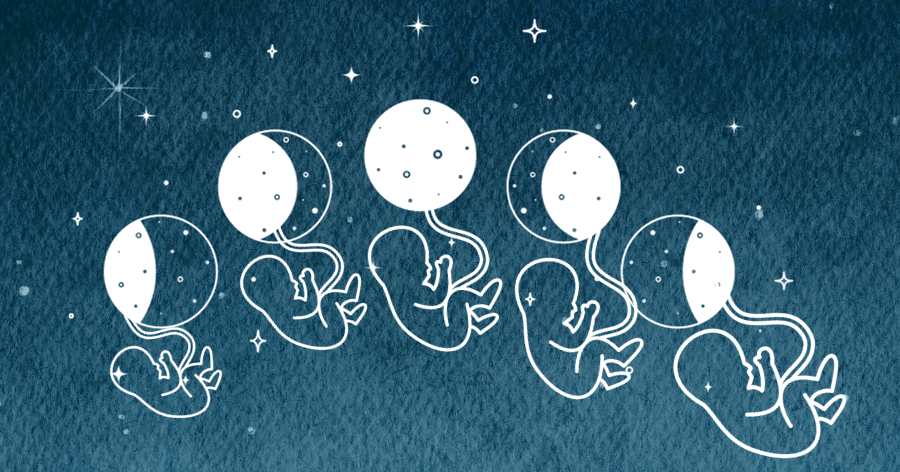
Keep Track of How Far Along you are by the Moon’s Phases
This method is based on the length of time it takes the moon to progress through nine complete cycles or lunar months. A lunar month is the time it takes the moon to cycle through each phase until it returns to the starting phase, for example from new moon to new moon.
1. Count 14 days from the first day of your last menstrual period (LMP) to find your approximate conception date.
2. Note which phase the moon is in on the conception date, such as new moon or first quarter.
3. Now count each time the moon is in the same phase. Don’t count the conception date. The ninth time it is in the same phase (the moon has completed nine cycles since your conception date), you will have reached your estimated due date.
For Example:
First day of last menstrual period = February 1, 2016
Conception date = February 15
Moon phase on February 15 = First Quarter
Count 1 = Next first quarter = March 15
Count 2 = Next first quarter = April 13
Ninth first quarter = Estimated Due Date = November 7, 2016
The main phases are: New Moon, First Quarter, Full Moon, Last Quarter (also called Third Quarter).
How it Works
The reason this method works is that the average length of pregnancy from the date of conception is 266 days, close to the time it takes the moon to complete nine complete lunar cycles. Each moon cycle is known as a lunar month (or lunation, or synodic period) and takes approximately 29.5 days. The actual length varies from cycle to cycle by a few hours but 29.5 days is the average.
If you work out your estimated due date using a calculator (Last menstrual period + 28 days) the result will be very close to the date worked out using lunar cycles.
Why 29.5 Days?
If there’s a new moon today, the next one will be in 29 to 30 days and not in 28 days as many people believe. It takes roughly 28 days for the moon to travel around the Earth, a cycle which is known as a sidereal month. However, each cycle, while the moon is traveling around the earth, the earth is also moving and so the moon has to catch up a bit before it returns to the starting phase.
Sidereal Month
A sidereal month is the length of time it takes for the moon to travel around the Earth – approximately 27.3 days – although it is normally expressed as 28 days. A sidereal month is about 2.2 days shorter than a lunar month.
Lunar Month: A lunar month is the length of time it takes the moon to cycle through all its phases. For example, the length of time it takes from one new moon until the day before the next new moon. A lunar month is approximately 29.5 days long, not 28 days as is commonly believed.
Sidereal months are easy to observe and provide a fun, non-tech way to track pregnancy progress, especially if you live somewhere with clear night skies.
Note: Make sure to also keep track of your dates with a professional health care provider.